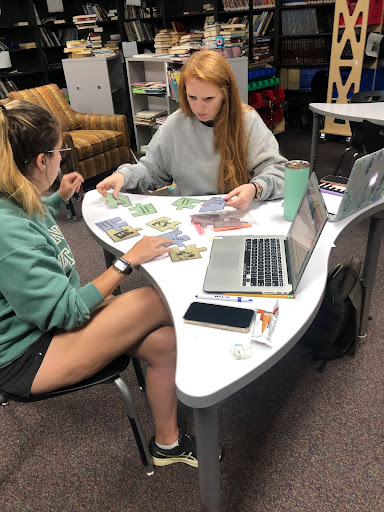Oh how I love to make my students curious. Maybe it stems back to being a curious little thing myself. I was an only child and rather quiet, so I didn’t ask “why?” a lot, but I did explore via reading and reading and reading. My favorite book growing up… Paddington’s Garden. Just in case you haven’t read it, Paddington is faced with a daunting dilemma. He, Judy, and Peter are each given a part of the back yard in which to create something. Whatever is a bear who loves marmalade and is on a tight budget to do with such a task? He goes exploring of course, and in the midst of a mishap or two, he discovers his contribution. He didn’t know what to do. He was curious. That curiosity led to creativity, which guided him to several learning opportunities and a solution.
I feel we truly reach our students, and make learning theirs, when we make them curious. One of the best ways to learn is to read. One of the best ways to read successfully is to be properly prepared to read, to have our past learning stimulated so that we are open to new learning. One of the most interesting areas of reading involves true stories about people’s lives. What do we often enjoy most about holidays and family gatherings? Grandpa’s stories of adventures from his youth. Aunt Lillian’s ramblings of what life was like for her growing up. Uncle Ken’s stories of serving in Vietnam. People are fascinating. After encountering the books Paths to Peace, Women Who Achieved Greatness, and 50 American Heroes Every Kid Should Meet, I found a different way to tie into what my students already know – to successfully prepare them to learn – and to introduce them to the world of biography: People Puzzle Pieces.
“We truly reach our students, and make learning theirs, when we make them curious. One of the best ways to learn is to read.”

All three books feature an attractive 1 or 2 page lay-out that offer a quick, succinct, compelling look into the lives of people who truly made a difference in our world. People like Eleanor Roosevelt, Albert Einstein, Mother Teresa, YoYo Ma, Ellie Wiesel, Walt Disney. These books also offer an inspirational quote from each person. What better way to pique my students’ curiosity and generate some interest than creating a puzzle for each person? Could my students work in pairs or trios to match a picture, a name, a job title, and a quote? Would not that make them want to learn more about that person? Would that even perhaps create an excellent way to create excitement to at least tackle a short text and perhaps enough energy for them to then seek out additional reading on one of these influential people?
Oftentimes in the testing our students face, they are asked to compare several pieces of text. This strategy has 2 to 3 texts built into its creation. What a lovely way to work with my students both in class conversation and in writing prompts – with me there to guide and respond – to help prepare them for test success.
Whether you are a science teacher, a social studies teacher, an art teacher, or a music teacher, there are people who are important to your field. People love to learn about people. You would not necessarily have to connect this activity to a specific text. You could use it to introduce a painting, a particular piece of music, Bernouli’s principle, or even Gregor Mendle’s pea plant experiments. If you would like to connect it to a specific text, Rachel Ignotofsky has some lovely recent contributions: Women in Sports, Women in Science, Women in Art. Who is important in your world and how can you get students excited to join you in exploring their lives?
“Who is important in your world and how can you get students excited to join you in exploring their lives?”

Resources: Following are the files I used to create this activity. First is the foundation edition of the puzzle pieces. These are the ones that I actually printed. In order to keep students from being able to complete puzzles based solely on color, when I created these, I purposely did all four squares first with names, then with professions, then with pictures, then with quotes. When I printed them, I ran each of those on a different color of card stock. The other document provides the answers. I had to be thoughtful in creating these so that each person ended up with a name, a profession, a picture, and a quote in 4 different spots within the puzzle.
Note on the Pictures: In July I had the opportunity to visit Dugger Union Community Schools for a two day workshop on ways to include non-fiction books in the curriculum by using various reading strategies. As one of our strategies, we did this puzzle piece activity. As I thought it would be, it was an excellent pre-reading strategy. It was a fun, non-threatening way to introduce a topic- people and multiple excerpts to read about them- and it generated some excitement about the subject, because it made people curious. “Oh… I didn’t know he or she said that.” “I wonder what else I could learn about him/her?” One other detail to note here, and it could be expected with adults, they did not have to debate within their group as long about who was who, what their professions were, and what they might have said, and their answers were more on track simply because of their life experiences.
Resources
Please login or register to claim PGPs.
Alternatively, you may use the PGP Request Form if you prefer to not register an account.


